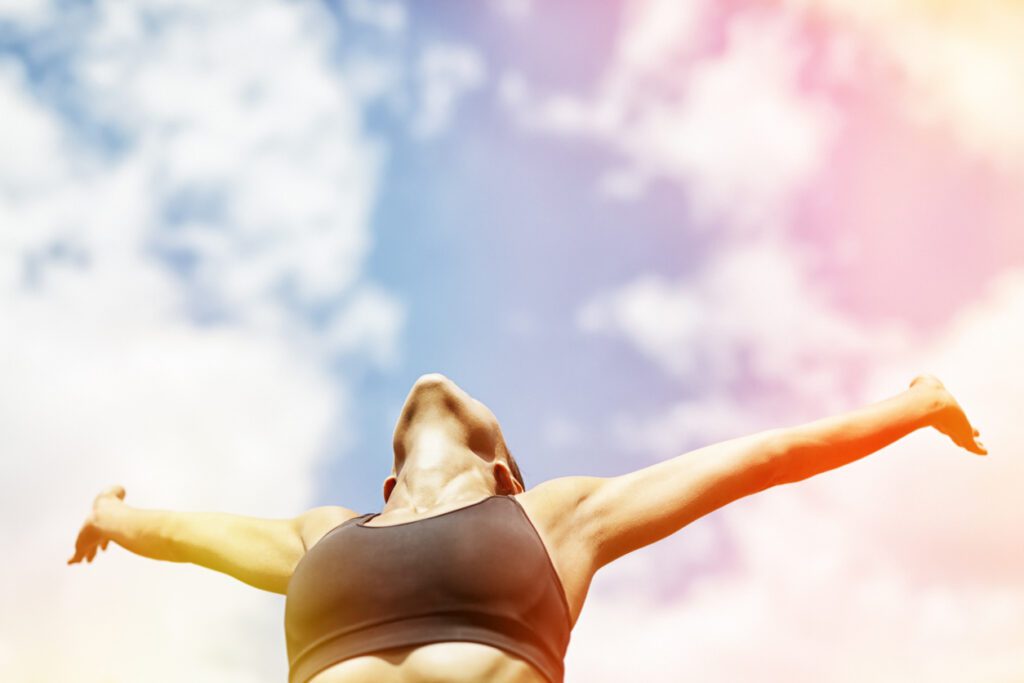In today’s world, we often live “from the neck up,” prioritizing our minds over our bodies. We’re constantly bombarded with information, tasks, and to-dos, leaving little room for connection with our physical selves. This disconnect can lead to feelings of stress, anxiety, and a general sense of being “out of sync.” But what if we could bridge that gap? What if we could rediscover joy through mindful movement, reconnecting with our bodies and finding a deeper sense of well-being?
This blog post explores the powerful connection between movement and joy, offering practical tips and insights to help you cultivate a more embodied and joyful life.
Understanding the Body-Mind Connection:
The mind and body are not separate entities; they are intricately intertwined. What affects one inevitably affects the other. When we experience stress or emotional distress, it often manifests as physical tension, muscle aches, or digestive issues. Conversely, physical activity can have a profound impact on our mood, reducing stress, boosting energy, and promoting feelings of happiness.
The Science Behind Movement and Joy:
Several scientific processes explain why movement makes us feel good:
- Endorphin Release: Physical activity triggers the release of endorphins, neurochemicals that act as natural mood elevators and pain relievers.
- Stress Reduction: Movement helps to regulate the body’s stress response system, reducing levels of cortisol (the stress hormone) and promoting relaxation.
- Improved Sleep: Regular physical activity can improve sleep quality, which is essential for both physical and mental well-being.
- Increased Self-Esteem: Achieving fitness goals and feeling stronger and more capable can boost self-esteem and confidence.
- Enhanced Cognitive Function: Movement increases blood flow to the brain, which can improve cognitive function, memory, and focus.
Mindful Movement: More Than Just Exercise:
While any form of movement can be beneficial, mindful movement takes it a step further. It’s about bringing awareness and intention to your physical activity, connecting with your body and the present moment. This means:
- Paying attention to your breath: Notice the rhythm of your breath as you move.
- Focusing on bodily sensations: Tune into how your body feels during movement – the stretch in your muscles, the feeling of your feet on the ground.
- Letting go of judgment: Avoid comparing yourself to others or striving for perfection. Simply enjoy the experience of moving your body.
Practical Tips for Cultivating Joyful Movement:
- Start Small and Be Consistent: Don’t feel pressured to start with intense workouts. Begin with short bursts of activity, such as a 10-minute walk, a gentle stretching routine, or some light dancing in your living room. Consistency is key. Even a few minutes of mindful movement each day can make a difference.
- Find Activities You Enjoy: The best type of movement is the one you actually want to do. Experiment with different activities until you find something that you find enjoyable and sustainable. This could be anything from yoga and Pilates to hiking, swimming, dancing, or even gardening.
- Listen to Your Body: Pay attention to your body’s signals. If you’re feeling pain or discomfort, stop and rest. Don’t push yourself too hard, especially when you’re just starting out.
- Incorporate Mindfulness Practices: Combine your movement with mindfulness techniques, such as:
- Body Scan Meditation: Bring your awareness to different parts of your body as you move.
- Walking Meditation: Focus on the sensation of your feet making contact with the ground as you walk.
- Breathwork: Pay attention to your breath throughout your movement practice.
- Create a Supportive Environment: Surround yourself with positive influences and create a space that encourages movement. This could mean joining a class with supportive instructors, finding a workout buddy, or creating a dedicated space for movement in your home.
- Connect with Nature: Moving outdoors can amplify the benefits of mindful movement. Spending time in nature has been shown to reduce stress, improve mood, and enhance creativity.
- Make it a Ritual: Schedule your movement practice into your day like any other important appointment. This will help you to prioritize it and make it a consistent part of your routine.
A Moment for Reflection (Prompts for the Reader):
- How does your body feel right now? Take a few deep breaths and notice any sensations you’re experiencing.
- What type of movement brings you joy? Is it dancing to your favorite music, going for a hike, or practicing yoga?
- Can you carve out just 5 minutes today for mindful movement? Even a short burst of activity can make a difference.
Try This: Set a timer for 5 minutes. Put on some music that makes you want to move (even if it’s just a little sway or tap of your feet). Close your eyes and feel the rhythm. If you are able, maybe you can even do a few stretches or walk around your home. Notice how your body feels before and after. Remember, there’s no right or wrong answer. The goal is simply to connect with your body and find joy in the process.
Embrace the Journey:
Cultivating joy through mindful movement is an ongoing journey, not a destination. Be patient with yourself, celebrate your progress, and remember that every step, no matter how small, is a step in the right direction. By reconnecting with your body and finding joy in movement, you can unlock a deeper sense of well-being and create a more fulfilling and vibrant life.

